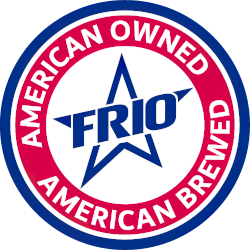How Can Light Beer Like FRIO Have Zero “0” Grams of Sugar?
How Can Light Beer Like FRIO Have Zero “0” Grams of Sugar?
It may come as a surprise, but beer doesn’t have any sugar in it. Or at least it’s not supposed to…
What most beer does have, though, are carbs and calories to spare.
Sugars, carbs, and calories are similar in many ways, mainly that they’re all linked to health and weight gain. They also all seem to be the bane of health-nuts.
If you’re concerned about your health, or if you’re simply interested in booze, to really understand beer, it’s good to be able to discern between the three.
First up is sugars.
First up is sugars.
When yeast is added to the malt, it eats the sugars and produces alcohol and carbonation.
So, the more thorough the fermentation process is, the less sugar will be in the finished product. That’s how beer like FRIO can contain such little or no sugar. If you find a beer with a high sugar content, it means that they skimped on the fermentation process, or their yeast went bad.
So what are carbs?
During the fermentation process, carbs are not completely converted to alcohol by the yeast. So, beer is often a source of carbs and should be avoided if going on a low-carb or keto diet.
Light beer like FRIO, however, is left to ferment longer and more thoroughly, allowing the yeast to eat up more of the carbs and sugars. This is how light beer is able to have little to no sugar and a low carb content. Impressive, isn’t it?
Now, let’s talk about calories.
If we consume more calories than we burn, we gain weight.
In beer, calories are (sadly) a given. In one gram of alcohol, there are about 7 calories. Just to get those numbers into perspective, a single tablespoon contains nearly 15 grams. That means that in one tablespoon of beer, there are about 105 calories.
In any alcoholic drink, there are going to be an abundance of calories. For people watching their weight, light beers are a healthy alternative to high ABV beers. Since light beers have a lower ABV, they contain less calories.
Final Thoughts
Beer has a bad rep, but as it turns out, beer naturally has an extremely low amount of sugar. So, while it may seem impossible that a can of beer can have zero “0” grams of sugar, a low carb content, and a low calorie content, beers like FRIO have been pulling it off for years.
Go forth and conquer the world with your new knowledge! Or just sit back and crack open a cold one, resting easy, knowing that you aren’t consuming unnecessary sugar.
Related articles
Can You Drink Beer on a Low Carb Keto Diet?
The ketogenic ("keto") diet is a popular diet trend. Is beer compatible?
READ NOW
The Remarkable History of Beer – Part 1
Beer has been an incredibly popular drink since 7,000 B.C.E. Beer played a key role in Human History.
READ NOW
10 Fascinating Facts About Women's Role in Brewing Beer
How did women first begin brewing beer, and how did beer brewing turn into such a masculine job?
READ NOW
The Remarkable History of Beer – Part 2
Before the Spanish arrived, Native Americans brewed beer with corn..
READ NOW
What's the Difference 2-row & 6-row Barley?
2-row barley grows only two columns of barley kernels, while 6-row barley grows 6 columns of kernels.
READ NOW








